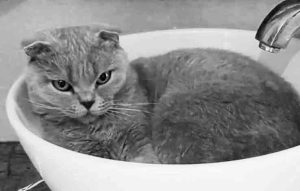So, what are chronic diseases and how do they affect us? A chronic disease is a malfunction of the body—or, more precisely, a malfunction of the endocrine system. The endocrine system is responsible for the functioning of all organs, as some glands—such as the thyroid gland, adrenal glands, parathyroid glands, etc.—release biologically active substances into the bloodstream for the proper and healthy development and functioning of the body.
When the endocrine system malfunctions, diseases and viruses develop in the pet’s body. These diseases are not always manageable or treatable, and they can progress to chronic conditions. Chronic diseases are characterized by a gradual and long-lasting illness that rarely responds to treatment, persists throughout an animal’s life, and periodically worsens, altering not only the animal’s physical condition but also its overall quality of life. Let’s enumerate a few diseases and explore the potential of living with them in a chronic form.

Remember, our website provides useful and accessible information about various diseases, pet care, feeding, diet, and other related topics. We are here to help you better understand the animal world and teach you how to help your pet not only adapt but also stay healthy.
So, the diseases are:
First, let’s discuss the coronavirus diseases; fortunately, there are only three. Coronaviruses, or coronavirus infections, are RNA-containing viruses. Many believe that the name came from the shape of the viruses—crown-like spikes.
*FELV (Feline Leukemia Virus) is one of the chronic diseases where the immune system fails and anemia occurs. The disease primarily affects young individuals, but it also affects a certain percentage of older animals. FELV is widespread around the world. Unfortunately, there is no treatment for FELV. There is only supportive therapy (medications to stimulate the immune system, blood transfusions, etc.).
*FIP (Feline Infectious Peritonitis) has two forms:
-“wet” form, where the animal accumulates fluids in various parts of the body (abdominal and thoracic cavities) and has a light yellowish mucus appearance.
-The “dry” form is challenging to diagnose, characterized by rapid weight loss and reduced appetite.
Cats in constant interaction, such as in groups, exhibitions, or with breeders, typically develop FIP, a condition that is less common in isolated or solitary environments.
Currently, there is an experimental drug. SG 441, available in both injections and tablets, is a long-term treatment that lasts for 12 weeks. It is quite effective and has no obvious side effects, with the exception of chronic kidney diseases.

* FIV FELV (Feline Immunodeficiency Virus) is a disease characterized by the impairment of the immune system and has an endemic nature. Street pets are more often susceptible to the disease. Compromised immune systems can lead to the active parasitization of the weakened body by other viruses and infections.
Let’s now outline a few examples of systemic chronic diseases.
*CKD (chronic kidney disease) is a disease of the kidneys and urinary tract; it is essentially a pathology stemming from CKD.
AAFCO/American Association of Feed Control Officials and NRC/National Research Council have developed “Nitrogen Balance,” a specific diet, along with supportive therapy and necessary medications, if the disease progresses to CRF stage.
Diabetes mellitus is also one of the chronic systemic diseases associated with endocrine system disorders. The animal’s body experiences a decrease in insulin production, a hormone that the pancreas produces. It is responsible for delivering glucose to every cell in the body, providing nutrition and energy for a healthy lifestyle, which can lead to hyperglycemia. Diabetes mellitus in pets can arise against a backdrop of constant stress, diet, excess weight, etc. General therapy can treat diabetes mellitus in its early stages, while a special diet and supportive therapy can treat it in later stages and in cases of advanced (chronic) disease.
Anemia—or pathology—in cats. Anemia refers to a decrease in the number of red blood cells, also known as hemoglobin, in the blood. It is important to note that anemia is not a disease, but rather a result of other chronic viral and systemic diseases, which indicate ongoing changes and processes in the animal’s body. These processes are responsible for supplying the animal’s body, as well as yours, with oxygen. Both the early and later stages of the disease can receive treatment. Look, we have gone through a brief educational session on diseases in pets with you, but in reality, there are many more diseases, and the topics are much deeper.
We will cover all diseases and pathologies, describe symptoms and diagnostics, and discuss treatment options. We do not encourage you to self-medicate or do things exactly as we write. We are merely trying to provide you with more information in an easily understandable format. You will have the ability to observe, listen, comprehend, and gain knowledge. Study the animal world more deeply. If a pet enters your life, it’s crucial to expand your knowledge and assume responsibility for it, enabling you to provide timely assistance and potentially even rescue it. Stay with us, and best wishes for you and your pets.


